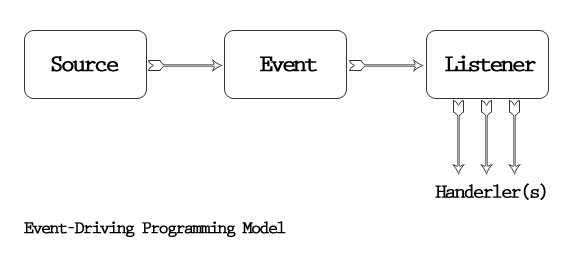

The example below shows how to register an on-click listener for a Button. (E.g., callĪnd pass it your implementation of the OnClickListener.) Then, pass an instance of your implementation To define one of these methodsĪnd handle your events, implement the nested interface in your Activity or define it as an anonymous class. These methods are the sole inhabitants of their respective interface. This is called when a Context Menu is being built (as the result of a sustained "long click"). onCreateContextMenu() From View.OnCreateContextMenuListener. Or any movement gesture on the screen (within the bounds of the item). Two of the handlers are written in JavaScript and the third one is in Java. This is called when the user performs an action qualified as a touch event, including a press, a release, If an event handler placed at the beginning of the chain makes a change to. This is called when the user is focused on the item and presses or releases a hardware key on the device. This is called when the user navigates onto or away from the item, using the navigation-keys or trackball. onFocusChange() From View.OnFocusChangeListener. An event is an object that describes a state change in processing.

An event is an object that describes a state change in a source. Presses and holds the suitable "enter" key or presses and holds down on the trackball (for one second). What is an event in delegation event model used by Java programming language a.

This is called when the user either touches and holds the item (when in touch mode), orįocuses upon the item with the navigation-keys or trackball and onLongClick() From View.OnLongClickListener. User events: mouse click, mouse down, mouse up, mouse drag, mouse within a component (focus), key pressed, particular key pressed. Presses the suitable "enter" key or presses down on the trackball. (when in touch mode), or focuses upon the item with the navigation-keys or trackball and This is called when the user either touches the item Included in the event listener interfaces are the following callback methods: onClick() From View.OnClickListener.
#Event handler in java android#
These methods will be called by the Android framework when the View to which the listener hasīeen registered is triggered by user interaction with the item in the UI. Event listenersĪn event listener is an interface in the View class that contains a singleĬallback method. In this case, you'll be able to define the default event behaviors for yourĬlass using the class event handlers. While you will more commonly use the event listeners to listen for user interaction, there mayĬome a time when you do want to extend a View class, in order to build a custom component.Ĭlass to make something more fancy. These interfaces,Ĭalled event listeners, are your ticket to capturing the user interaction with your UI. This is why the View class also containsĪ collection of nested interfaces with callbacks that you can much more easily define. In order to handle such an event would not be practical. However, in order to intercept this, you must extend The onTouchEvent() method is called on that object. For instance, when a View (such as a Button) is touched, An event handler method has a single parameter of type EventHandlerContext, a generic interface, which is parameterized by the event type. These methods are called by the Android framework when the Within the various View classes that you'll use to compose your layout, you may notice several public callback To assign an event handler to an event associated with an HTML element, you can use an HTML attribute with the name of the event handler. The View class provides the means to do so. Event handlers typically have names that begin with on, for example, the event handler for the click event is onclick. The specific View object that the user interacts with. When considering events within your user interface, the approach is to capture the events from

The addEventListener() method attaches an event handler to the specified HTML element without overwriting the existing event handlers.On Android, there's more than one way to intercept the events from a user's interaction with your application. To add an event handler to an HTML element, you can use the addEventListener() method of the element object.


 0 kommentar(er)
0 kommentar(er)
